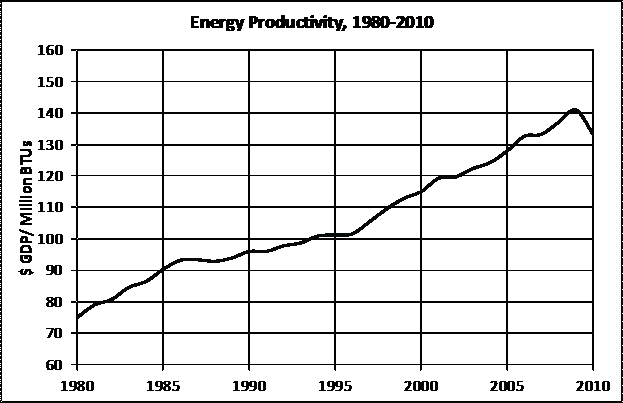Systems Integration

Systems Integration
The Alliance Commission on National Energy Efficiency Policy (the Commission) aims to use this report as a means to identify the main areas of interconnectivity among the power, industry, transportation, and buildings sectors. This report examines major cross-cutting themes – technology, investment, behavior, and government – to convey key insights that will guide advancements in energy productivity across sectors and offer potential frameworks for energy efficiency policy in the United States. The intent of this analysis is to identify overlap between reports to allow for a systems thinking approach to policy recommendations.
Technology
Technological innovation for a more energy productive economy is applicable across all sectors. The links between these technologies are complex and benefit from a broad understanding of system effects which can include a very large potential for new technology and for better diffusion of existing technologies and the need to think about and manage systems. Additionally, information and communication technologies provide tremendous tools to more productively manage energy from individual device to systems level. Uncertainties and risks exist but can be mitigated through demonstration, validation, and technical assistance.
Investment
U.S. Energy Productivity between 1980 and 2010
Sources: Energy Information Agency, Bureau of Economic Analysis, Department of Energy, Energy Efficiency and Renewable Energy, Planning, Budget, and Analysis |
Energy efficiency initiatives that strengthen energy security and economic growth will require stimulation through increased capital investments and, ultimately through coordinated investment data collection, the security and desirability of those funds can evolve into other investment vehicles. Private sector investors have traditionally focused upon expanding energy supply, but interest in energy productivity has grown in recent years, as demonstrated by investments in more efficient cars and building appliances. There, however, is significant potential for further investments. Improving coordination between sectors, changing the perception of risk in the market, and aggregating financial opportunities are a few methods that can help overcome barriers to increased energy efficiency investments.
Behavior
No proposals for improving U.S. energy productivity are self-implementing. Consequently, goals must be translated into incentives that are mutually reinforcing and action must be able to take place through carefully constructed mechanisms. Awareness and understanding of energy productivity must be improved throughout the entire decision chain, from facilitators to consumers, to achieve the highest possible result. This can be accomplished through appropriate messaging and conveying the information in a timely manner. Finally, significant changes to the workforce development system are needed. Curricula and certifications will need to be modernized and made available to fill the competencies required of new jobs across all sectors of the economy.
Government
Policy makers, from every level of government, play a vital role in achieving the Commission’s goal of doubling U.S. energy productivity by 2030. Policies, program implementation and investment at all levels of government can transform markets which can facilitate greater energy productivity. The government must continue to develop policies that encourage investments, information flow, and research and development in energy efficiency, and it must lead by example by reducing its own level of energy consumption and operate more efficiently and effectively.
Energy Productivity: Impact of Behavior
Several organizations have conducted studies demonstrating the impact of behavior change on energy efficiency savings.
- The American Council for an Energy-Efficient Economy (ACEEE) estimated that behavioral changes may contribute as much as an additional 25% in efficiency gains above normal energy productivity improvements in the economy.
- Massachusetts Institute of Technology (MIT) found that a mean savings rate of 2.03% can be achieved from the behavioral programs, with savings at an average cost of 3.31 cents per kilowatt hour (kWh).
- The Environmental Defense Fund (EDF) estimates the nationwide implementation of behavioral programs could save 26 terawatt hours of electricity per year in the residential market. This would amount to household savings of over $3 billion annually.
Murtishaw and Sathaye. “Quantifying the Effect of the Principal-Agent Problem on US Residential Energy Use”; Laitner and Martinez “People-Centered Initiatives for Increasing Energy Savings”; Davis, “Behavior and Energy Savings: Evidence from a Series of Experimental Interventions.”
View a printable version of the Systems Integration report and two page summary.
STAY EMPOWERED
Help the Alliance advocate for policies to use energy more efficiently – supporting job creation, reduced emissions, and lower costs. Contact your member of Congress.
Energy efficiency is smart, nonpartisan, and practical. So are we. Our strength comes from an unparalleled group of Alliance Associates working collaboratively under the Alliance umbrella to pave the way for energy efficiency gains.
The power of efficiency is in your hands. Supporting the Alliance means supporting a vision for using energy more productively to achieve economic growth, a cleaner environment, and greater energy security, affordability, and reliability.




